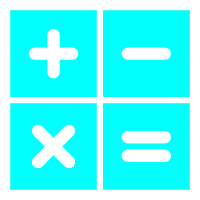Factor of 3
A factor of 3 is any number that can divide 3 without leaving any remainder. In other words, a factor of 3 is a number that can be multiplied by another number to get the result of 3. For example, 1 and 3 are factors of 3 because they can be multiplied by one or more numbers to get the result of 3.
In mathematical terms, we can express the factor of 3 as follows:
In mathematical terms, we can express the factor of 3 as follows:
- The factor pairs of 3 can be expressed as: (1, 3).
- Exponent form of 3: 3^(1/1) or 3^(1).
Calculator for Factors of 3
If you want to calculate the factors of a number, including the factor of 3, you can use a factor calculator.
Factor Calculator
Enter a number to factorize:
Calculation Guide of Factors of 3
In the upcoming sections, we will explore how to compute the factors of 3, and also provide answers to frequently asked questions such as "What is the total number of factors in 3?" and "Which factors of 3 are prime?" The main objective of our discussion will be to develop a comprehensive understanding of the factors of 3.
You will find all the information you need on the factors of 3 calculations below.
You will find all the information you need on the factors of 3 calculations below.
How many factors does 3 have?
To calculate the factors of 3, we can list all the possible factor pairs of 3, which in this case is (1, 3). Therefore, 3 has 2 factors in total.
What are the prime factors of 3?
The prime factors of 3 are simply 3, because 3 is a prime number and cannot be divided by any other prime number.
Principal factor of 3
All numbers have more than one factor. For the number 3, the main factor can be defined as the largest factor that is less than or equal to the square root of 3. The square root of 3 is approximately 1.732, and the factors of 3 include 1 and 3. Hence, the main factor of 3 is 1.
To sum up, the factor of 3 is any number that can be multiplied by another number to give the result of 3. We can calculate the factors of 3 by listing all the possible factor pairs of 3. The prime factor of 3 is simply 3 because it is a prime number. Finally, the principal factor of 3 is defined as the largest factor that is less than or equal to the square root of 3, which is 1 in this case.
To sum up, the factor of 3 is any number that can be multiplied by another number to give the result of 3. We can calculate the factors of 3 by listing all the possible factor pairs of 3. The prime factor of 3 is simply 3 because it is a prime number. Finally, the principal factor of 3 is defined as the largest factor that is less than or equal to the square root of 3, which is 1 in this case.
